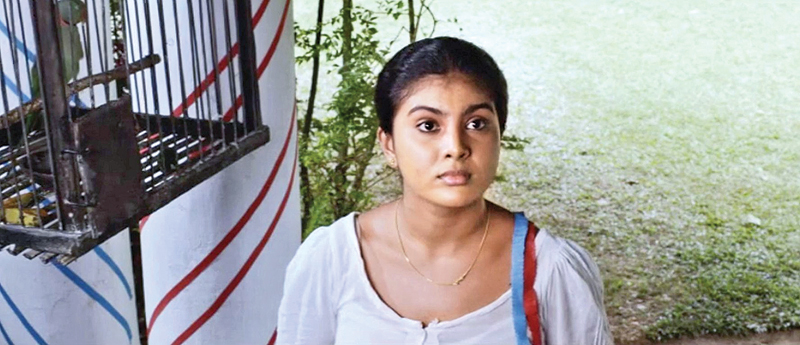Having read a few reviews and opinions expressed, I had to remind myself to be open-minded in watching the film. Then again, I have refused to be caged by ‘isms’ when appreciating a work of creative art, -in all the diverse forms, it manifests in.
The first impression was that I liked it. I liked it very much. It should be appreciated that the film approaches the audience with a fresh approach. The setting in terms of timescale is the not so ancient past. But it does represent a certain period and community with conventional beliefs and values.
 The people not so ‘sophisticated’ or ‘affluent’. The focus is on an entertainer in the form of an artist who provides puppet shows as a profession. A story of an apprentice under a master who happens to be also his guardian. As often referred to he is ‘family’, like his ‘own son’. They not only perform but also makes the puppets who represented various walks of life. It was not only a profession to them but also a way of life.
The people not so ‘sophisticated’ or ‘affluent’. The focus is on an entertainer in the form of an artist who provides puppet shows as a profession. A story of an apprentice under a master who happens to be also his guardian. As often referred to he is ‘family’, like his ‘own son’. They not only perform but also makes the puppets who represented various walks of life. It was not only a profession to them but also a way of life.
Intimate manner
Incidents prove that the young man was quite close to the puppets. Often he addresses them in a friendly and even in an intimate manner. Maybe being an adopted boy he would have felt a certain empathy with them. He seems to have confidence in confiding in them when the need to confess certain emotions arose. Maybe because he was sure they would not misunderstand or ‘judge’ him. The conduct or relationship does not seem artificial or strange. Just as in the modern era people may converse their computers or vehicles. The barrier between reality and relationship so flimsy that it is almost non-existent although the young man was well aware that they were only puppets with he worked with. The aforementioned relationships are not so strange nor are they limited to a certain era. let me quote a poem that I had composed sometime back. The title of the said poem is 'In Good Company'.
In Good Company
Just when did I start communicating
With vegetation? The plants and
The trees around me?
Maybe more respect to
The tall aged trees.
And more compassion to the
Smiling happy flowering plants.
Was it after I started talking to
The birds and the squirrels?
Talking to my pets – the cat
And the dogs was, a habit.
When was it exactly?
After I realized that
They were more trustworthy
And less deceitful than humans?
Unlikely to betray or mock?
Un- judgmental?
Or was it just the natural need
Of good company?
Like having an argument
With the car?
Or an affair with the computer?
Then why the selection and gradation?
On which grounds does that operate?
The master craftsman, aware of his duties as a guardian and out of affection and concern for the young man, arranges a marriage for him. The would-be bride was attractive and the consent is given. The prospect of a married life would have aroused many hopes and dreams in the mind-opening new vistas for him in imagination. Dormant desires would have arisen in anticipation through the attraction. This is proved by the fact that his mind refuses to recognize the rejection of him by the bride expressed in a not so subtle manner. He is shattered though he pretends to overcome the disappointment. Yet one is made to ask if he really was able to repress the kindled emotions, through logic and reasoning.
Traditional modes
Simultaneously attention is drawn to the traditional belief in deities residing in trees. The ‘tree deities’ from whom the trees are ‘freed’ before they were cut down. They needed wood to make life-size puppets, and for this, they had to cut down massive trees in the woods. Hence it was logical to bring in the custom as well as the traditional modes of ‘communication’ with the supernatural. Hence the magic and ritual theme does not prove to be an artificial intrusion. Mysticism was an integral part of the social life, a reality in their way of living, an essential in their realm of comprehension. They turned to the supernatural in times of need for solace and aid, where emotions such as fear are negotiated.
The only close association Osanda had was with the daughter of his guardian. It is obvious that she did possess some kind of attraction to him. But to this he definitely could not respond to him, she was only a sister. He could have never conceived her as a 'woman' he desired. They were mere siblings.
The psychological turmoil instigated by the proposal and rejection is aptly displayed by the manner he carves out a new female puppet in nude. The creation is so realistic that the master asks him to show it to no-one in the fear of the 'evil eye'. The sister is enraged since she seems to believe that she stands for the woman of his desire. Hence it is obvious that it is the manifestation of his inner-psychological condition.
- Reviewed by Professor Kamani Jayasekara



Add new comment